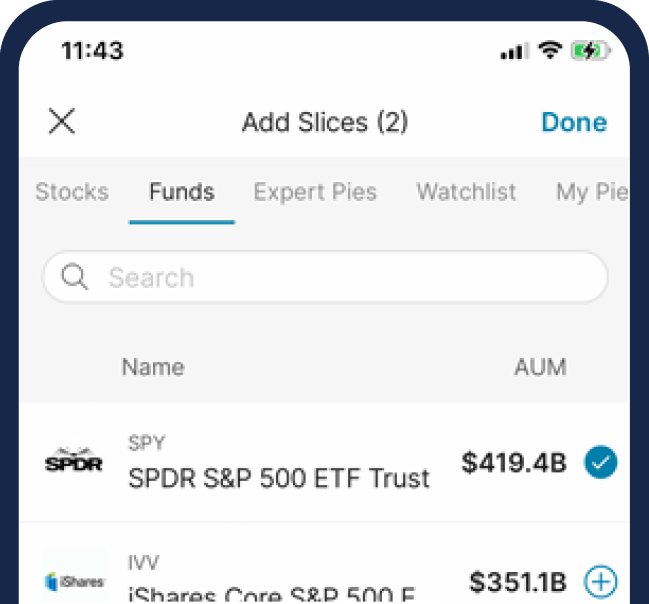What is a custodial account?

A custodial account is where you can invest on behalf of a minor. Because the minor can’t access the funds until they become an adult, these investments have theoretically many years to grow. Parents use a custodial account as a place to invest for their children for large future expenses, like a home purchase, first vehicle, or college tuition.
The minor who will receive the account will gain control of the account once they reach the appropriate age. This ranges from 18 to 25, depending on the state. The person who opens and manages the account is called the custodian.
All states except South Carolina have adopted variations of the Uniform Transfers to Minors Act (UTMA) to govern their custodial accounts. South Carolina uses an older version of the law called the Uniform Gifts to Minors Act (UGMA).
At M1, you can open a custodial account (with M1 Plus) that complies with your state’s version of the law and start saving for your children’s future.
Here are the details of a custodial account to know if this is the right account for you and the minor that will be awarded the assets.
How to open a custodial account
M1 Plus members can open a custodial account as part of their membership in the app in a matter of minutes. To open a custodial account, all you need is the child’s basic information, including their contact info and Social Security number. From there, the account’s custodian will control the assets until the child has reached the age where they can take possession of the account.
Once the child takes ownership of the account, they can use the assets for any purpose.
Investing on behalf of a minor can potentially give them a step forward for their financial future. Open a custodial account today on M1.

Rules of a custodial account
The purpose of this account is to allow parents or other supportive adults to give children a step up when they reach adulthood. There are plenty of incentives for funding a custodial account, but also some downsides to be mindful of.
Benefits include:
- Time horizon: Since minors legally cannot invest, it gives adults the opportunity to invest on their behalf. So if you want to contribute to a custodial account, those funds have time to potentially compound and grow until the child is a legal adult. And it can be a great time to teach your children about investing for the long term.
- No limits: For those that want to invest heavily in a custodial account, there are no contributions limits like there are in an IRA or 401(k).
- Flexibility: With a custodial account, the beneficiary can use the funds for any purpose once they reach the legal age for making withdrawals. Accounts like ESAs and 529 plans, which can be custodial but usually aren’t, are designated for education-related expenses.
Downsides include:
- Impacted financial aid eligibility: If the beneficiary of the custodial account plans to attend college, or needs to access various forms of financial aid, the assets in the account could potentially reduce their eligibility. If the purpose of the custodial account is to pay for education costs, a 529 plan may be worth considering instead.
- Potential tax liability: Contributions could be subject to the federal gift tax if they exceed the contributor’s 2023 annual gift tax exemption of $17,000 ($34,000 for married couples filing jointly). The child may also owe taxes on earnings (informally known as “kiddie taxes”), although the first $1,250 in earnings is exempt, and the next $1,250 in earnings may be taxed at the child’s potentially lower tax rate. Be sure to sit with a licensed tax professional to come up with a tax plan that works best for you and your child.
The power of investing rather than saving for a child
With the long-term investing mindset, you can give your child a great leg up when they enter adulthood. Here’s an example.
Let’s say you put away $3,000 at your child’s birthday each year until they turn 18. Depending on where you put that cumulative $54,000, you will have very different results:
- Putting money in a safe: $54,000
- Savings account @ 2.00% APY yearly: about $65,000
- Custodial account invested into the S&P 500 with a hypothetical 9% rate of return*: about $121,000
Disclaimer: Over the last 10 years, the S&P 500 has had an annualized 11.75% net total return. However, past performance doesn’t guarantee future returns with any security or investment.
The M1 bottom line
Investing over the long-term is a core tenet in building sustainable wealth. However, your children can’t legally invest on their own, so opening a custodial account is one way to start building wealth for them until they come of age.
If you’re investing for your child or another minor, they have the best tool when it comes to investing: time. And with consistent investing over the long term, they can potentially have a solid nest egg to help them get their lives started.
Disclosures:
M1 Plus is a paid annual membership that confers benefits for products and services offered by M1 Finance LLC, M1 Spend LLC and M1 Digital LLC, each a separate, affiliated, and wholly-owned operating subsidiary of M1 Holdings Inc. “M1” refers to M1 Holdings Inc., and its affiliates.
All investing involves risk, including the risk of losing the money you invest. Brokerage products and services are offered by M1 Finance LLC, Member FINRA / SIPC, and a wholly owned subsidiary of M1 Holdings, Inc.
M1 does not provide investment advice, and this is not an offer or solicitation of an offer, or advice to buy or sell any security, and you are encouraged to consult your personal investment, legal, and tax advisors. Past performance does not guarantee future performance.
All examples above are hypothetical, do not reflect any specific investments, are for informational purposes only, and should not be considered an offer to buy or sell any products. M1 does not provide any financial advice.
20230410-2828886-8994546
